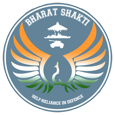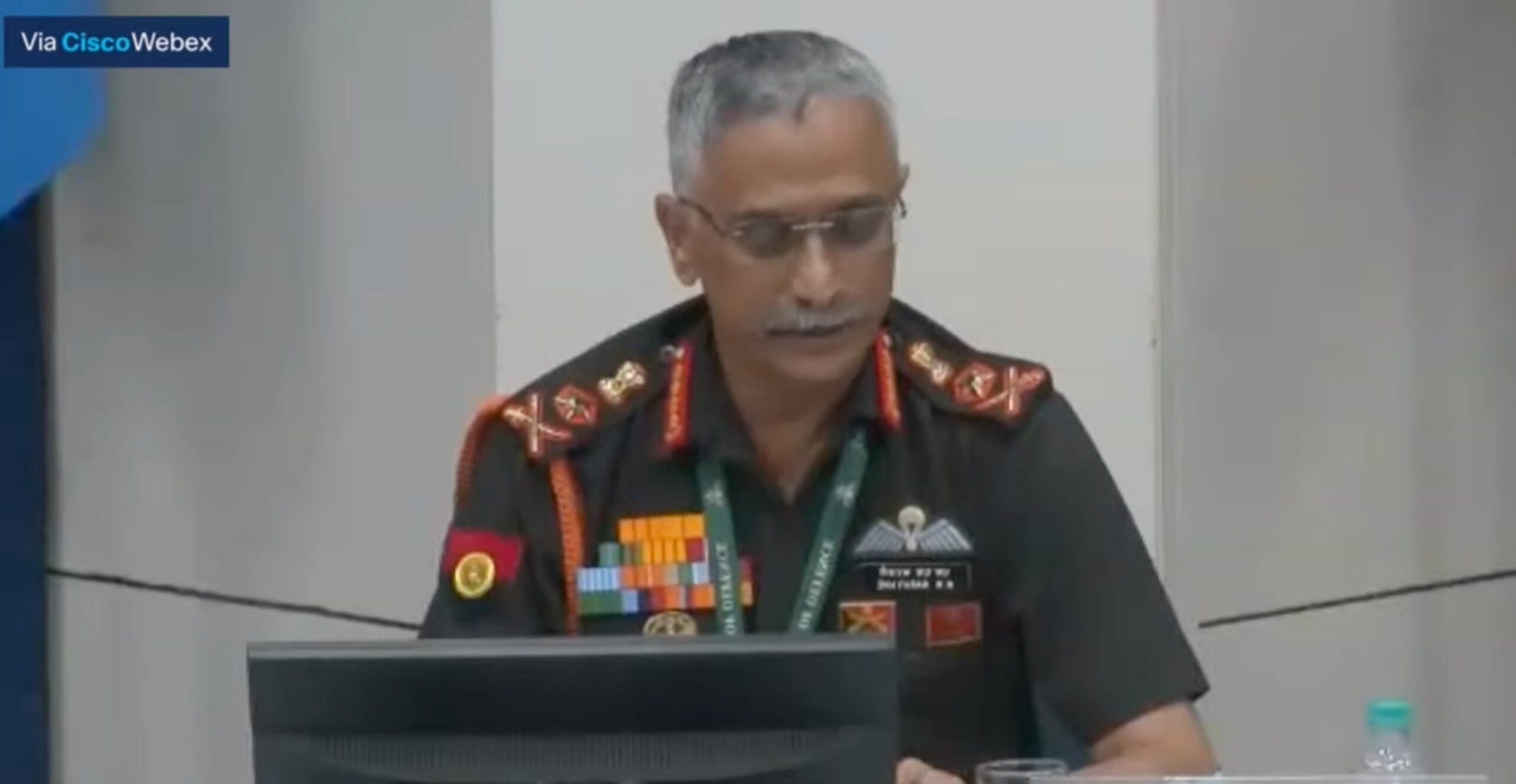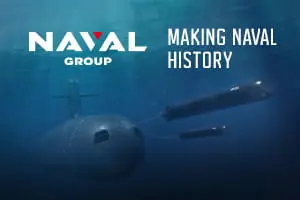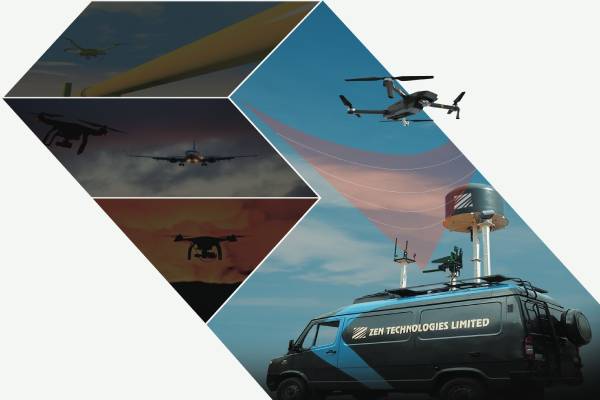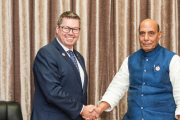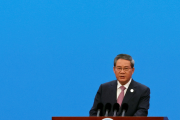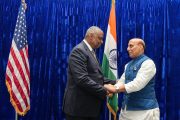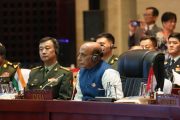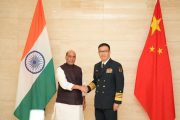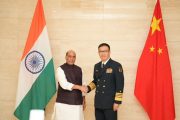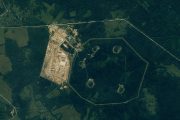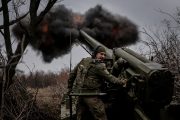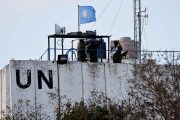‘Transformation Imperatives for the Indian Army in the Coming Decades’ is a necessity that is already upon us. ‘Transform or Perish’ is more relevant today than at any time in the past. Consider this, our neighbourhood which has been volatile in the best of times, is witnessing unprecedented changes in terms of security implications for our country. These challenges are testing the strength and resilience of our pillars of National Power. With every crisis comes opportunity, and as Churchill said “Never let a good crisis go to waste”.
Throughout history there have been profound developments, geo-political, technological and even doctrinal that have brought about transformative changes in the character of conflict and prosecution of war. The strong and mighty, those who have remained rooted to old forms and convictions, have been too slow to change. They have made way for the nimble and fleet footed, both in thought and action. These are the realities of the changing world order, the rise and fall of nations. Much the same is mirrored in the corporate world as well, wherein renowned MNCs who failed to transform have become extinct.
So what has really changed and is this change transformative or merely evolutionary development over time?
Consider a scenario….sitting at home, watching the World Cup finals, checking WhatsApp messages, sipping your favourite brew while also listening to your wife. The TV screen turns blue and displays the message “Your Set-Up Box is not receiving any Signal. This could be due to bad weather or bad connectivity”. The WhatsApp hangs. Now, only the wife is audible.
You pick-up the landline phone, since the network is out, to lodge a complaint, but there is no dial tone. You curse the weather and start fiddling about with various cables and switches, trying to get the TV going again – after all it is the World Cup Finals. A half-hour has passed.
With little to cheer in your efforts, you hear the sound of the DR’s motorcycle downstairs. You tell yourself – “Good, now at least I can get someone to repair my TV”. But wait, it is the Duty Officer from the Military Operations Directorate urgently requesting you to the Ops Room. All he can tell you, is that some channels are reporting kinetic strikes on the border areas as well as significant disruptions in the rail and air traffic. As you head out, your wife asks you from behind if you will be back for lunch.
The social media is rife with conflicting, misleading and sensational messages. In this haze and confusion, it is near impossible to distinguish the real from the fake. Up on the frontline, Commanders are wondering what to do and awaiting orders. The battalions are battle ready and good to go. But alas, oblivious to everything, you were sitting repairing your TV. Though the tensions had been building up, such is the innocuous start to the War.
Even while the troops at the forward defended localities (FDLs) are all primed and in a state of high alert, it is the command and control centres, airfields, depots and strategic communication nodes in depth that take the first hit from stand-off vectors with precision targeting. Swarms of low flying autonomous drones breach or overwhelm the Air Defence cover in the second wave, targeting the artillery guns, missile bases and tank concentrations. Rocket and missile attacks from stand-off distances join battle to degrade conventional capabilities and soften the targets. Operations will unfold in ‘Reverse Linearity’ with the FDLs possibly being the last to be addressed,
if at all.
Such situations of loss of access to networks and paralysis due to totally unexpected pattern of unfolding events are being wargamed by many Armed Forces across the world. For example, the US Military, during a recent war gaming exercise realised that the Blue Forces suffered a brutal loss from an aggressive Red Team that had been studying their warfighting concept for past many years, with the Red Team targeting information networks right at the beginning itself, resulting in total paralysis of the Blue Team.
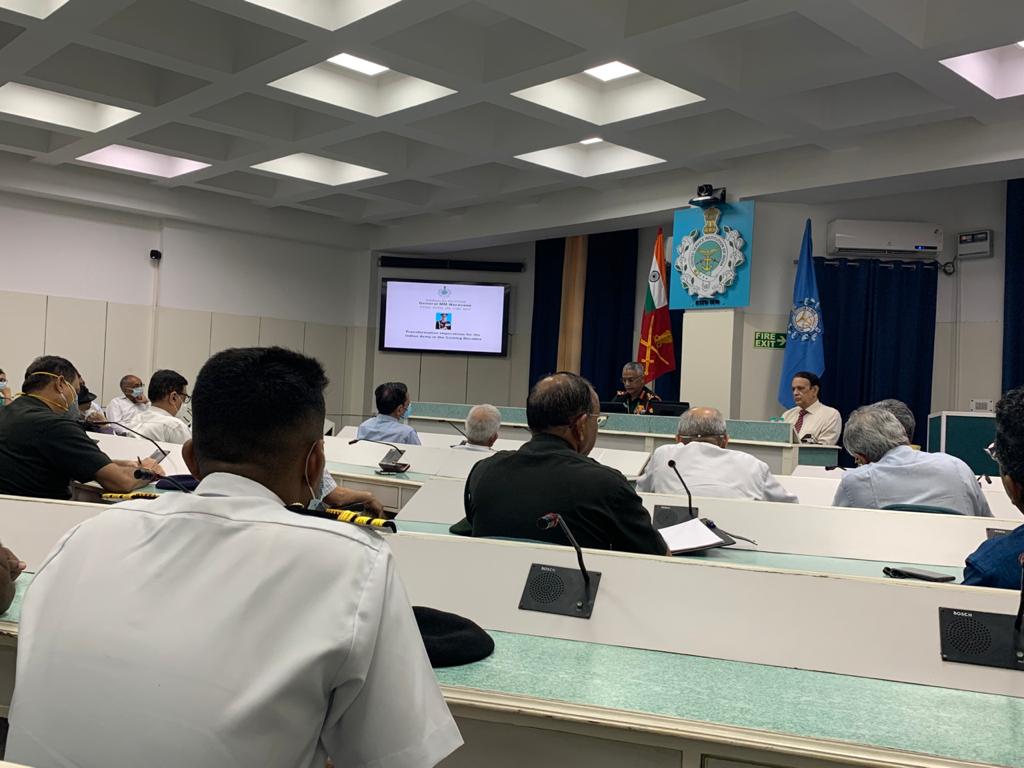
Technology Boom Altering Character of warfare
Various versions of this scenario have been played out, in different forms, in recent conflicts. In September 2019, we saw the Aramco air strikes – the fascinating drone/missile combination that penetrated some of the most sophisticated Air Defence Systems of the world to strike with 95% accuracy. Then again, first in Idlib and later in Armenia – Azerbaijan, we witnessed the imaginative and offensive employment of drones that sent the prima donnas of conventional warfare, the tanks, guns and large combat systems scurrying for cover. One key lesson that emerged was that the concentration of aircraft, ships and other forces to reinforce each other’s combat power made them sitting ducks. The tendency to converge to fight, makes you vulnerable to the precision fires available to the adversary. There is therefore, a need to aggregate fires rather than platforms.
More recently, the Israel – Hamas conflict has been a demonstration in the use of disruptive technologies to exponential effects. Operation Guardian of The Walls, the 11 day offensive by Israel against Hamas in the Gaza strip, was driven majorly by capacities in niche technologies including Artificial Intelligence. An Advanced AI-platform was created by the Israeli Defence Forces that integrated all data of the adversary into one system – a combination of super cognition, lethality and sophistication. It led to superior analysis and extraction of intelligence and precision targeting of the Hamas Operational Posture. Satellites were deployed to detect changes in dispositions in real time. Facial recognition techniques were exploited to target Commanders. With fusion of latest technologies, the Iron Dome yet again emerged as a remarkable system for Israel.
These precursor events can well be extrapolated to draw out the contours of future wars. So the impact of technologies on strategic – military affairs, in recent times, has been profoundly disruptive. This Technology Boom is altering the very character of warfare, it is impacting the combined – arms balance and the combat framework of Tactics, Techniques and Procedures. Technology is increasingly becoming a Core Combat Capability and even a key Principle of War.
It is already making unequal’s on the battlefield equal, as also impacting the very mechanics of the company and squadron assaults and the nature of the physical fight. The Ends, Ways and Means construct has been turned on its head which was the primary methodology for evolving doctrines and concepts. Today, technology has become the driver for formulating doctrines and concepts.
It is already being acknowledged that these transformative technologies will create new digital colonies and satellite states; new winners and losers in the strategic competition, new power centres, new haves and have-nots amongst nation states. By way of impact and influence, it will exceed the Industrial Revolution by several orders of magnitude.
Technology: Vital Tool to Address Military Asymmetry at Northern Borders
Technology as a vital tool in addressing power and military asymmetries is a very useful proposition, especially in our strategic competition with our Northern neighbour. With a large gap in defence spending, it is the suitable utilisation of technology that can enable us to temper and even out the military imbalance.
This Technology Boom comes at a time of significant changes in the global power calculus, the shift in balance of power to Asia, a contest for the global commons and threat to the Rules Based Order. This challenge to accepted norms and agreements has manifested in a notion of superiority or lawlessness, the expansionist agenda resulting in unilateral actions on our Northern Borders to change the status quo.
In fact the developments on our Northern Borders indeed reflect the complexity of the challenges we face. On one side, there are new threats on the horizon, but on the other, the legacy challenges with regard to our unsettled borders, and therefore the threats to the preservation of our territorial integrity and sovereignty, cannot be wished away. This is the hard reality that needs to be factored in all our future calculations.
So what are the imperatives that flow out from our appraisal of the future operational environment?
To answer that, I would like to draw an analogy, with a game of Football being played between two teams. This example, I had also given in my address at the Vivekanand International Foundation, which I would like to reiterate. Visualise, that on one side they are playing European style Soccer. An orderly game, where the rules are pretty stringent. Deliberate physical contact earns you a red card. The second team though, is preparing for a totally different kind of Football, American style Rugby. The game, unlike the earlier one, is intensely physical and complex. Even the shape of the ball is different, as is the goal and the scoring system. Not to mention the scantily clad cheer-leaders to distract attention – classic Information Warfare!
In such a contest, there is little doubt as to who will win. Do I need to emphasize, that the first team better change- and change fast!
Indian Army Needs to Transform
For years, our adversaries have studied the attributes, especially the weaknesses of Western style militaries in war-fighting. The Indian Army too is schooled in many of those Western precepts. In order to counter our operational experience and preparedness in hard core kinetics, our adversaries have developed stratagems and focused their energies in the ambiguous grey zone. They have sought to out manoeuvre us in the spectrum short of all out conflict, taking the battle to the newer domains of space, cyber, and informatics, drawing us out into areas where they enjoy a natural advantage and are significantly better equipped.
With Western militaries focusing on amassing massive combat power through the aggregation of large military platforms like tanks, guns and aircraft carrier led huge naval armadas, our adversaries have invested in creating a formidable stand-off enterprise in the form of long range precision fires, hypersonic vehicles and robust air defence capacities, apart from an impressive array of space, cyber and information operations tools.
So with all these developments we cannot continue with European style Soccer, we too need to transform our game.
Macro Determinants for Transformation
Let me now touch upon some Macro Determinants of this transformation as I see it:
Human Capital
The first and the foremost is our most capable and valuable asset, the Human Capital: the Officers and Soldiers who serve the Nation. From a young soldier or a Lieutenant of 20 plus years to the senior leadership between 50 to 60 years, there is a span of 3-4 decades. The aspirations, perceptions and outlook have generational gaps.
With rapid urbanisation, societal norms too have undergone significant changes. While that has always been so, what makes this gap more formidable is the rapid, almost exponential change brought about by technology. There is no denying that the younger lot is a product of the information age and therefore more adept at handling technology. “The new generation is different, not indifferent. It is for the older generation to adapt, rather than try to mould the younger generation into versions of themselves”.
This Human Resource will need to develop an understanding of the current environment and own the change that is in the offing. A Directive Style of leadership with greater freedom of action at each level and decentralised control is the only way to develop the capability in commanders at all levels to act in consonance with the larger objective, in the absence of orders.
While raising the technical threshold, there is also the need to concurrently develop multi-domain competencies than are currently present, for effective integration. These new skills are required to handle modern technologies and systems in Cross-Domain Operations.
Commanders will have to be comfortable using AI enabled systems while taking decisions. They would need to understand the limitations of these machines and the mistakes that they may commit. Therefore, these intelligent and autonomous systems will have to be complemented with carefully calibrated levels of human control for legal and ethical assurance.
There is lot of work underway to train, reorient and empower this human capital to new age warfare. The Shimla based Army Training Command has restructured the training curriculum of various courses. We are working towards Domain Specialisation in niche areas. There is focus on providing cross-domain exposure and multi-skilling for optimal employment. Plausible scenarios are regularly war-gamed to adapt and orient.
Realign Doctrinal Precepts
That brings me to the next imperative, that of reappraisal of our Doctrine, Tactics, Techniques and Procedures to adapt to the realities of the contemporary battlefield environment. Militaries have long been accused of training to fight the last war. The reality is, that it is not easy to anticipate the contours of the next war, especially in the context of the scenario outlined earlier.
Our own Design of Battle must flow out from the envisaged Enemy Pattern of Operations. If our adversary has shown greater inclination for Non-Contact Warfare, we too need to develop greater prowess in the new domains of Space, Cyber and the Digital Spaces to shape the battlefield. While being prepared for war, we must also be equally adept at countering competition and confrontation, below the threshold of hostilities, in the Grey Zone. The spectrum of conflict is not restricted to only the first quadrant i.e., plus – plus on the x – y scale but may lie anywhere, and in the worst case, we may be in a state of conflict without even knowing it, in the minus – minus quadrant.
Concentration of effects through synergised and cumulative application of capabilities for desired outcomes will have to be achieved at the point of decision without physical concentration of forces. In order to execute a strategy that flows from our doctrinal precepts, we must have the right structures and organisations. Force Structuring therefore becomes the next operational imperative that I shall briefly touch upon.
Force Structuring
We cannot hope to fight and win the next war with legacy structures evolved from the past. Our force structures must be agile, flexible, modular and networked. They should reflect the realities and challenges of the contemporary battlefield. While being organised as we fight, we should be able to strike the right balance between the combat and the support elements, more frequently referred to as the teeth to tail ratio.
Our structures must support faster decision making. The ongoing transformation into Integrated Battle Groups or IBGisation not only configures the structure to its operational task but also shortens the OODA loop by removing a layer from the existing hierarchy of command and control.
At the Joint Services level, the transition to Theatre Commands is already going through initial considerations. All changes will be carried out after detailed deliberations and war-gaming to bring in greater operational efficiency and transform the Armed Forces into lean, agile and battle winning forces.
However, I must confess here that what we have achieved thus far, is merely jointness for the industrial era; we need to transit rapidly to full scale integration for digital era combat as also in the pursuit of greater interoperability. It is hard enough to be joint, the difficulties in interoperability will be many times greater. We need to recognise the scale and magnitude of the challenge, and move with greater rapidity towards integration in combat, cross governmental fusion and complete dissolution of inter–agency as also civil and military silos.
That brings me to the last point, that of Capability Development.
Capability Development
There is a dynamic relationship between evolving security threats and capability development, each trying to outsmart the other. Thus, to remain current and relevant, capability development must foresee future threats, and evolve accordingly.
Military capability development today is not the sole preserve of the Defence Industry alone. The race for dual use cutting edge technology the world over, has led to an unprecedented civil-military fusion not seen in the past. Military, technology entrepreneurs and traditional centres of excellence in science, are coming together for the larger military good. Let me illustrate this with a few examples.
Civil-Military Fusion
China’s National University of Defence Technology, as part of its Thousand Talent Plan, has recruited ten top of the line Professors from across the world, to drive cutting edge military projects. The US Army Futures Command, has signed MoUs with 300 top colleges and universities to propel cutting edge R & D in defence. These examples are largely to give you a flavour of which way the world is headed.
In the Indian context, the twin challenges of COVID, and the belligerence of our adversary on the Northern Borders, have brought to fore the vulnerability of global supply chains, underscoring the critical need for self-reliance. However, it must be appreciated, that the dual requirement of fast-tracking modernization, and simultaneously promoting self-reliance, are indeed challenging objectives, for a developing nation like India. Considering the quick pace of defence modernization, being undertaken by our adversaries, we cannot afford to be lagging behind.
What Are We Doing?
In the last few years, we have tried to reduce our reliance on exports by boosting indigenization and focusing on dual purpose, high end technology. This approach, will not only ensure self-reliance, but will also hold good, during times of emergency. We are committed towards all-out support, to enable our industry, especially in the domain of R&D, which will afford cutting edge technology, to win the wars of tomorrow. It may be noted that 75% of Priority 1 projects of the 13th Army Plan, costing over `Rs 1,50,000 crore are supporting our efforts towards indigenization.
The Army Design Bureau, since its inception in 2017, is harnessing the potential of the local industry and academia, for addressing the requirements of the Indian Army. It has undertaken pan-India mapping of institutions including the Indian Institutes of Technology. The huge potential of technological research offered by the IITs and the Start-up Incubation Centres established by these premier Institutes is being tapped for progressing indigenous development of niche technologies.
Hand holding of Industry by providing Firing Ranges, Testing Facilities, Equipment and Weapon System, Innovation Competitions, ‘Def-Expo’ etc, have resulted in coherent development of capabilities, aligned to the requirements of the Indian Army. Various initiatives have been undertaken under iDEX. Recently, iDEX4 Fauji was launched along with Defence India Start-up Challenge IV (DISC IV) to generate futuristic ideas for innovations in defence manufacturing.
The outreach to Industry by the Indian Army has enabled local players & start-ups to showcase their equipment. Many of these have been demonstrated and evaluated in actual operational areas. Supply orders have been placed and deliveries, delayed due to COVID, are likely to begin within the month. A very effective interface has been created with the academia and the defence industry through ARTECH (Army Tech) Seminars to synergize efforts aligned to our felt needs.
We have also brought about major structural changes in our organisation by aligning both the revenue and capital routes of procurement under the Deputy Chief of Army Staff (Capability Development and Sustenance).
However, this alone is not enough. Our procurement process unfortunately has not kept pace with the requirements of time. Many procedural lacunae have crept into the acquisition process which due to the over bearing nature of our rules & regulations, leading to a ‘Zero Error Syndrome’. This is further aggravated by our own interpretation of rules. We end up not being able to fast track the process of acquisition, because we try to cater for every contingency and plug every loophole. This results in the acquisition process being tied up in knots. The needs of Information Era Warfare cannot be hamstrung by the procedures of the Industrial Age.
The need of the hour is to have a metamorphosis here too, perhaps even doing away with the concept of the L1 vendor altogether. As I keep saying, for real transformation to take place, we require a Revolution in Bureaucratic Affairs.
Conclusion
Towards the end, I would like to conclude by saying, that the Indian Army is undergoing a silent transformation, to remain a potent and capable instrument, of the Nation to face future challenges. Rebalancing of Forces, Organisational Restructuring, and Capability Development in new domains of warfare, are concurrently taking place alongside investment in Human Capital.
Wars today, more than ever before, require a Whole of Nation effort. The transformation of the Indian Army and indeed of the Armed Forces needs to be resource informed. I wish to assure you that efforts to remain at the cutting-edge are ongoing. On its part the Indian Army shall continue to deliver, as it has in the past, and live up to the trust and faith reposed in us by the Nation.
Team BharatShakti
Note: “Full text of the talk delivered by Army Chief Gen MM Naravane at the United Services Institution on 3 August, 2021“.

